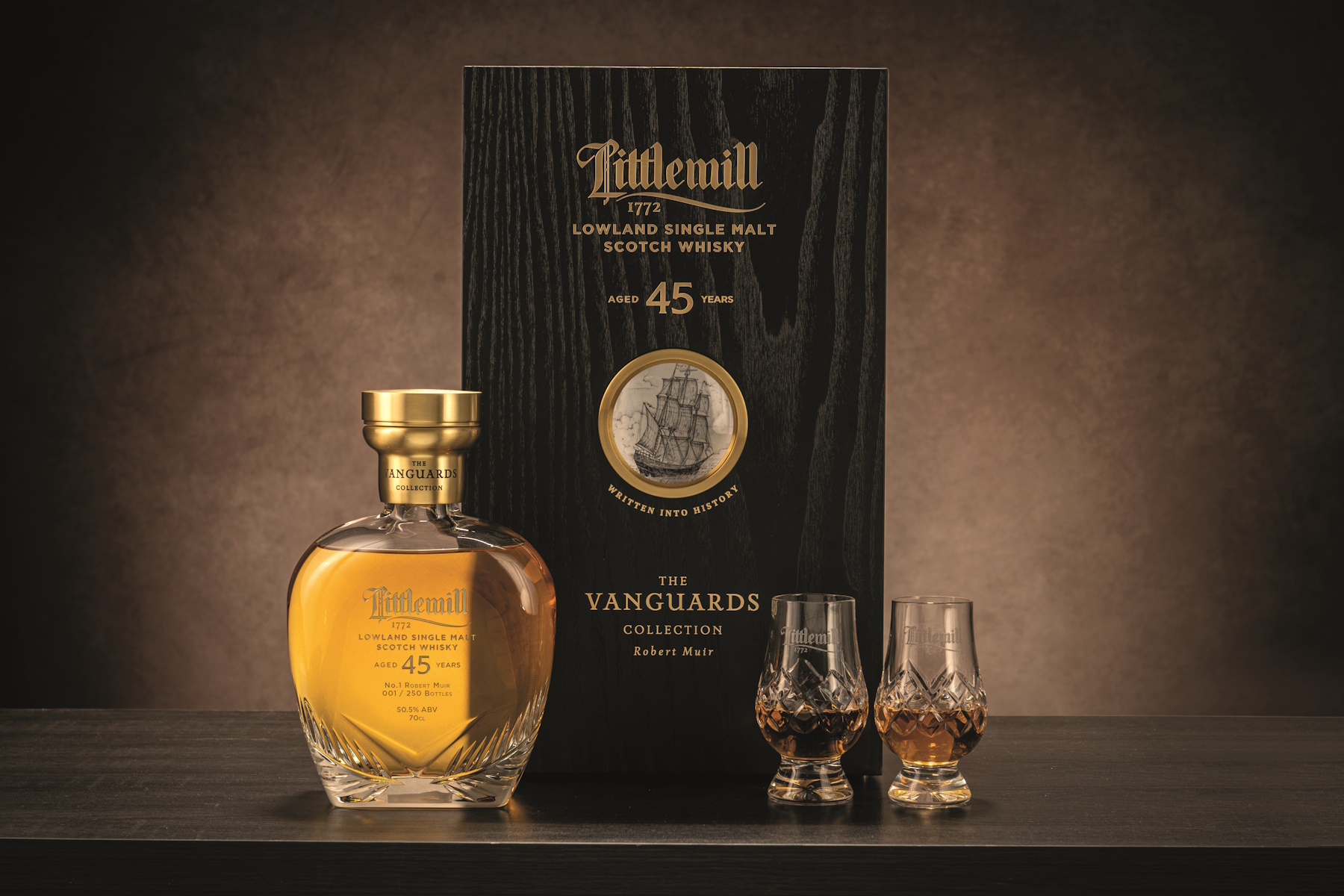Littlemill 45yo

The Loch Lomond Group not only owns the Loch Lomond and Glen Scotia distilleries, they also own m.in. littlemill whisky brand. And it is Littlemill that is about to appear any moment in an unusual limited edition, which is to be the beginning of a new collection.
Littlemill 45yo The Vanguard Collection Chapter One is a whisky distilled in October 1977. It was initially matured in American oak barrels, and for the final five years of maturation went into a first-fill hogshead barrel, seasoned with oloroso sherry. It was bottled without dilution, as follows cask strength, which in this case means a beverage with a strength of 50.5% vol.
The new edition of Littlemill was distilled using patented straight-necked alembics containing rectification racks - an invention patented by distillery owner Duncan Thomas in 1931. After the distillery closed in 1984 and Glen Catrine Bonded Warehouse took over 10 years later, the alembics eventually went to the Loch Lomond distillery.
Littlemill 45yo The Vanguard Collection Chapter One in aroma offers hints of honey, elderberry, pineapple, kiwi, roasted hazelnuts, cinnamon and nutmeg. Its taste should include notes of brown sugar, vanilla, crème brûlée, crisp apples, ripe pears, freshly squeezed lime juice, sultana raisins and citrus zest.
The edition is limited to 250 bottles, each of which will cost £12,500.
The Littlemill distillery is - or rather was - one of the oldest whisky makers in Scotland. It is understood that whiskey production at the site of the distillery began as early as 1772. It was located in the village of Bowling, at the mouth of the River Clyde, two steps from Dumbarton, so in the Lowlands region. According to the historical custom adopted in the region, Littlemill distilled whisky three times, but this production regime was abandoned when the distillery was taken over by the aforementioned Duncan Thomas in 1931. As a born innovator, Thomas decided to improve Littlemill's operations by getting rid of the old alembics and installing new ones, which are hybrids of alembics and rectification columns. In practice, these were traditional alembics with straight, wide necks, in which rectification shelves were placed. By properly controlling their temperature, it was possible to produce a whole range of distillates with different profiles using a single set of alembics.
Regardless of the varied distillation regime afforded by the alembic design, Littlemill also produced a range of whiskey versions due to the level of embolization of the malt used in production. Similar to today's Springbank, Littlemill alembics flowed with either basic, peatless Littlemill, lightly peated Dunglass, or heavily smoked Dumbuck.
Whisky production at Littlemill was halted in 1984, but resumed in 1989 and was maintained until 1992, when the plant was closed due to the bankruptcy of the Scottish subsidiary of Gibson International, owner of the distillery. The new owner, Glen Catrine Bonded Warehouse, carried the intention of turning Littlemill into a distillery museum, but those plans never came to fruition. The final liquidation of Littlemill took place in 1996, when the distillation equipment was dismantled and the buildings were sold to developers. In 2004, the Littlemill buildings were consumed by fire.
Although Littlemill has no longer been producing whisky for years, the House of Whisky Online still offers several vintage and collector's editions whiskies from this distillery. We invite you to visit.
[15.09.2023 / photo: Loch Lomond Group]